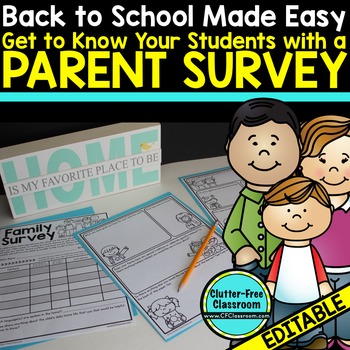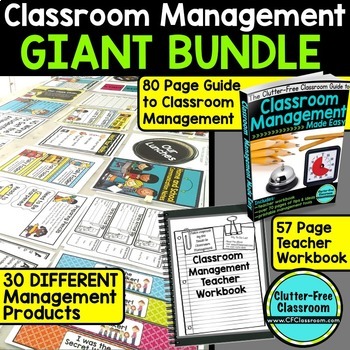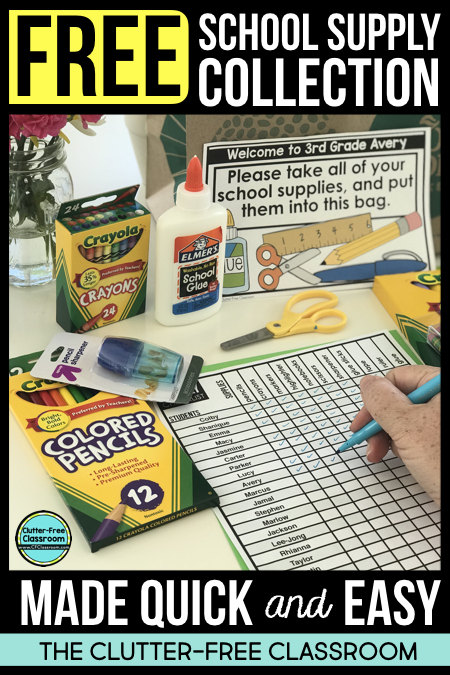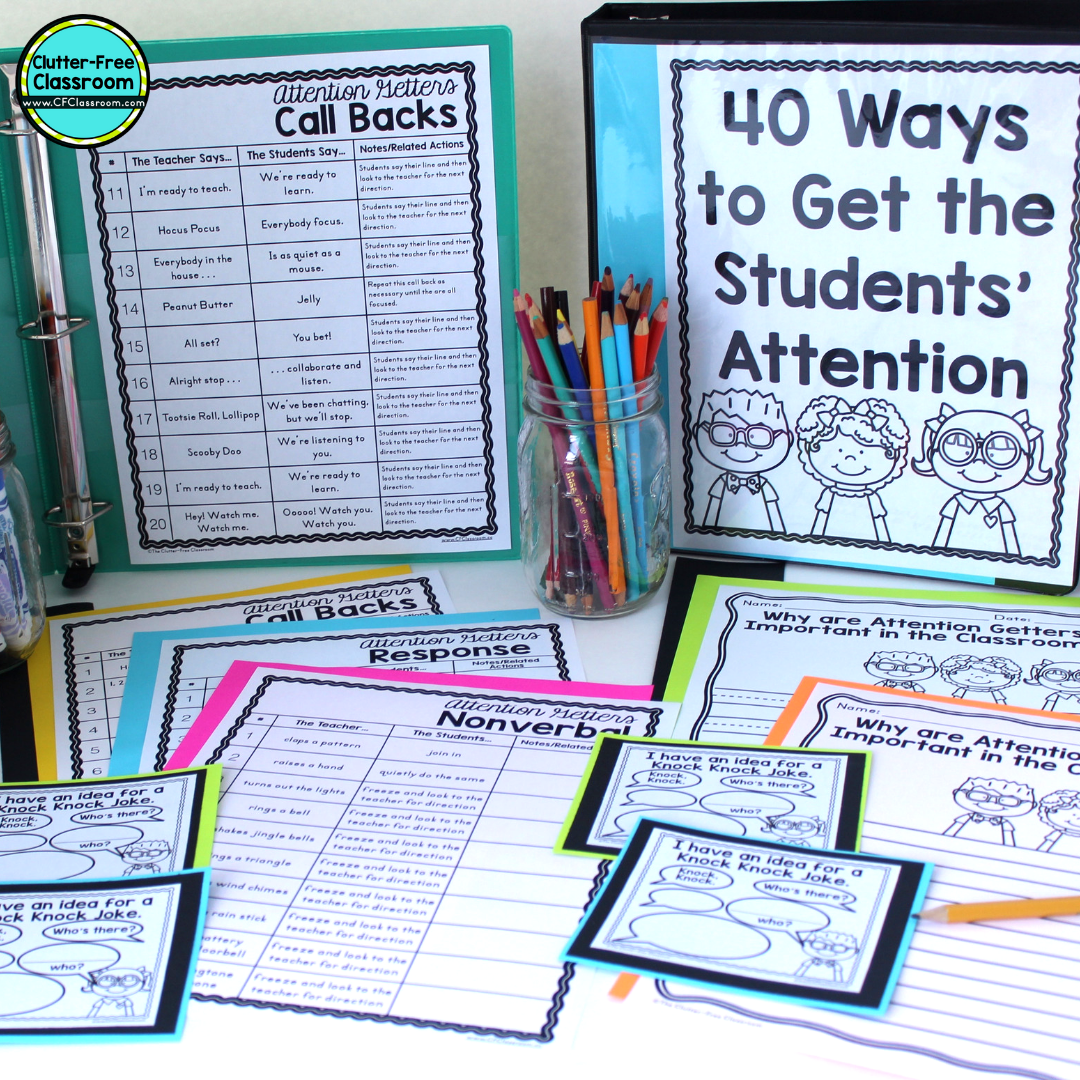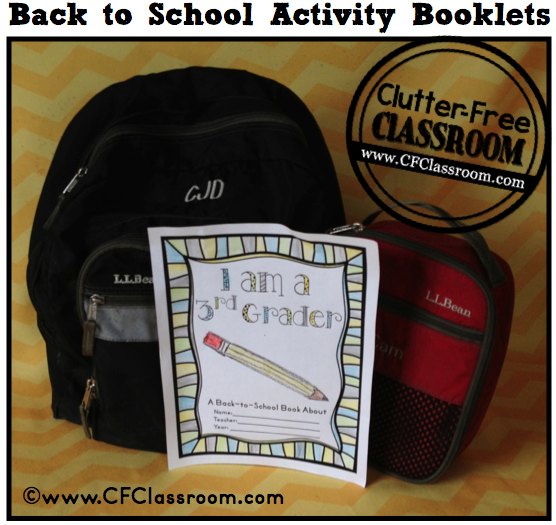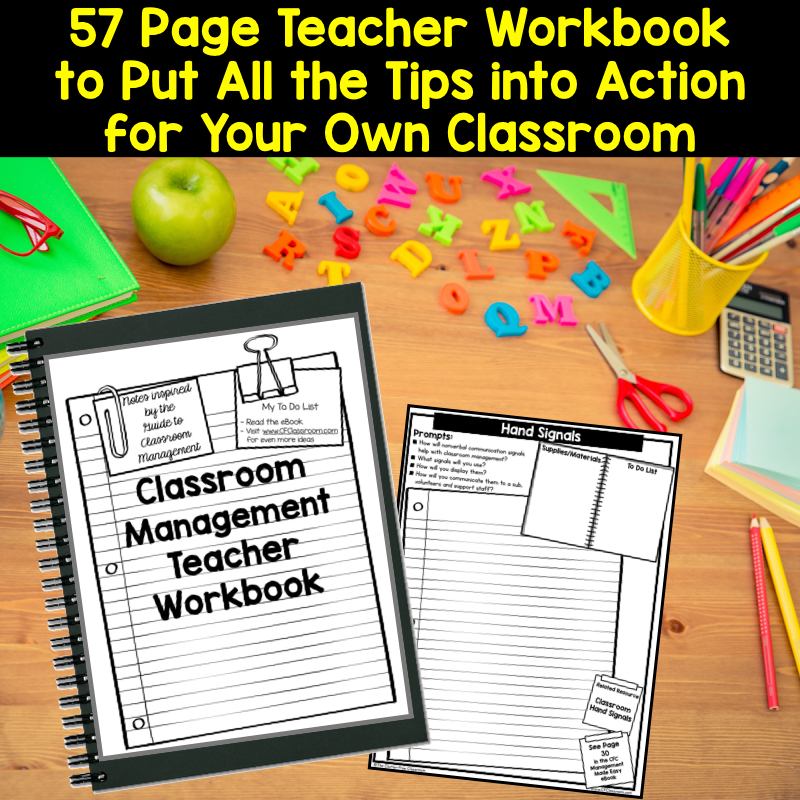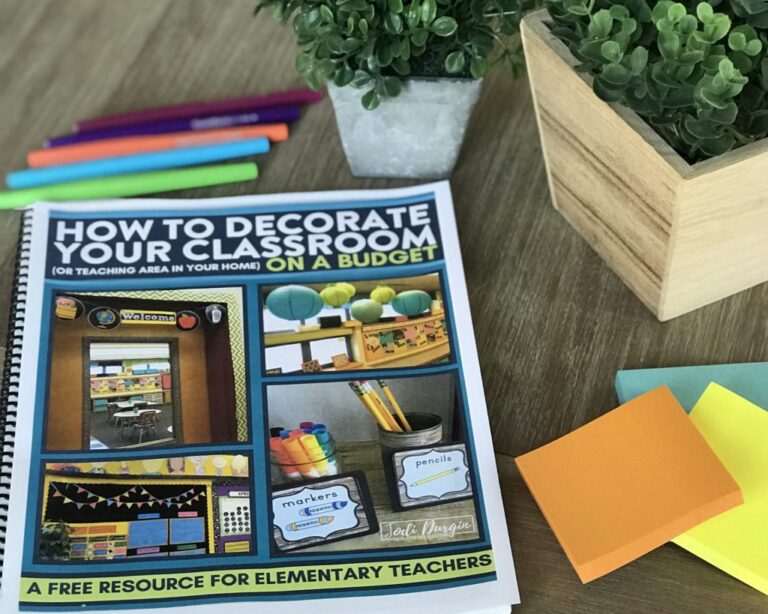I’ve had a lot of first days of school as a teacher and have learned a few things along the way. This has helped me develop a teachers first day of school checklist. Below are 8 items from that list! But before I start, I should preface this by saying I HATE “icebreakers.” You should too. Let’s think about this for a minute. Doing an “icebreaker activity” right away means you will have a group of kids who have some nervous energy gathered together in a classroom where rules, routines, and expectations have not yet been established. Typically you will be the only adult in that space. Your “I-Mean-Business-Teacher-Look” will not yet have been internalized by your new cohort. It is the perfect recipe for chaos.
You want your students’ first impression of you to be that you are welcoming, approachable, and VERY happy they are there. You do NOT want them to initially perceive you as the crazy lady who had to raise her voice and frantically blink the lights off and on in a desperate attempt to gain control of an “untangle yourselves from a human knot in order to get to know each other” activity gone bad. And it will go bad. Instead, I prefer activities that are calm, fun, and purposeful. It’s important to start the year on a positive note. Below is a collection of some of my tried and true tips for the first day that you should add to your teachers first day of school checklist!
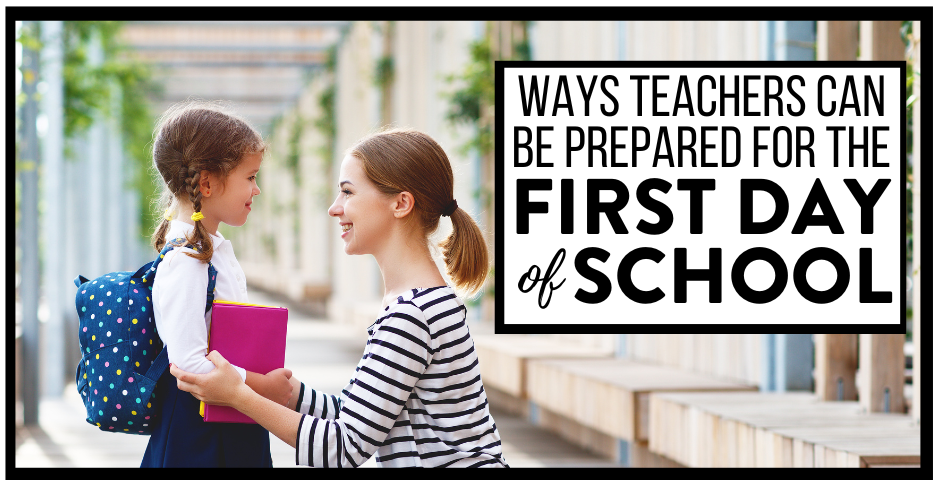
8 Things Teacher Must Do on the 1st Day of School
This list of 8 things a teacher must do on the first day of school contains back to school activity ideas, tips for classroom management and organization strategies to use right away, and suggestions for building strong home to school relationships right from the start. Read all about it below!
1. Contact your New Students and Families
The first item on this teachers first day of school checklist is to reach out to students’ families. Better yet, contact the students and their families before the first day of school. Give them a call to introduce yourself and ask how the child will be going home on the first day. This is especially important if you are teaching the littlest learners.
Send them a note. A good old-fashioned snail mail letter in a colorful envelope is an absolute treasure to a child. Tell them about you. Include some photos. Let them know what to expect on the first day of school. Tell them where you will meet them that morning. Inform them of what will happen as soon as they enter the classroom (see below). This will greatly decrease nervousness and anxiety. It will also help your day run more smoothly than you could ever imagine.
Also, send home a parent survey! It’s a great tool for helping you get to know your students and their families.
2. Have a Plan for Managing School Supplies
Have a plan for what you will do with all those supplies they bring in. I created an amazing system for collecting the supplies without chaos and even made you some free printables to use. You can read my step-by-step instructions for fast-and-easy supply collection and organization by reading my post all about the essential supplies teachers need in their classroom.
3. Establish an Attention Getter
The very first thing you need to do is communicate to your students how you will get their attention. As time goes on you can add in other fun attention getters, but to start you simply need something to grab their focus immediately. You’ll need to get their attention often during the first week because your routines will not yet be second nature. I suggest using a clapping pattern that they repeat back to you combined with hand gestures.
Simply clap a rhythm loudly: 2 slow claps followed by 3 quick claps.
The students then clap that same rhythm back to you. Repeat until all students are participating. Add in some hand movements such as “Clap – Clap – Thumbs Up – Clap” or “Clap – Clap – Throw Your Hands in the Air – Clap”.
End by holding your hands above your head, clapping, twice, clasping your hands together, and pulling them down in front of you.
I like this for a couple of reasons. You only need to get the attention of a couple kids the first time and it quickly catches on. Also, it requires the students to put down anything they are fidgeting with and look to see what you are doing. Finally, it ends with their hands together and eyes on you.
Practice this several times when you introduce it.
4. Start with a Calm and Easy Activity
The fourth idea on this teachers first day of school checklist is to start the day with a calm and easy activity. Have a plan for what the kids will do as soon as they walk in the door. The perfect activity regardless of their grade level (even my son’s middle school teacher did this on the first day) is play dough. The reason I feel this is by far the best activity to start the day is because it is relaxing, students of all ability levels can participate immediately, and it is familiar.
If you don’t want to buy Play Dough, I have THE BEST recipe for making it. You can read more about how I use play dough as a first day of school activity and grab printables for the recipe at this Why Teachers NEED Play dough on the First Day of School blog post.
5. Have an Ongoing Activity for the Week
Throughout the week of school (and especially on the first day) you will find yourself needing to address unexpected situations and will have things pop up that require your immediate attention.
You will also discover that there will be spare moments to fill since you won’t yet have a solid schedule or routines in place. Having an activity on hand for your students to work on as needed is a necessity in order to keep your day running smoothly.
The activity needs to be ongoing. It should be something that can be done independently. It should not require instruction from you.
Introduce the activity on the first day of school. Explain to the students that if a situation comes up where your attention is needed, then they are to work on that activity. It will be their go-to project for the week.
In my classroom, I have always used these activity booklets with great success. I created the “I am a Third Grader” activity books for my own students, and by request now have them available for grades K through 5. Check them out below!
- Kindergarten All About Me Packet
- 1st Grade All About Me Packet
- 2nd Grade All About Me Packet
- 3rd Grade All About Me Packet
- 4th Grade All About Me Packet
- 5th Grade All About Me Packet
6. Establish Procedures and Routines
The sixth idea on this teachers first day of school checklist is to establish procedures and routines. Many teachers add “go over the rules” to their first day plans, but the key to having a classroom community that is respectful and self-running is to establish consistent procedures and routines.
When I do professional development for new teachers, I always have them list out all of the routines and procedures they think they should teach. Typically their lists will include things like lining up, sharpening pencils, and dismissal. Those are important but there are so many more.
I’ve actually compiled a very comprehensive list, explained what I found worked best for each in my classroom (after 17 years of tweaking), and made a classroom management workbook you can use to plan for your own classroom.
Take the time to think through your entire day and your expectations for how every activity, need, and transition should run. Teach the children what you expect through lots of modeling and practice. Soon you’ll see you have much more time for instruction because you won’t lose precious minutes to classroom management issues.
7. Take Lots of Pictures
Take a few minutes to snap some photos. Consider taking a photo of each student to document their first day in that grade. Check out this DIY photo frame project!
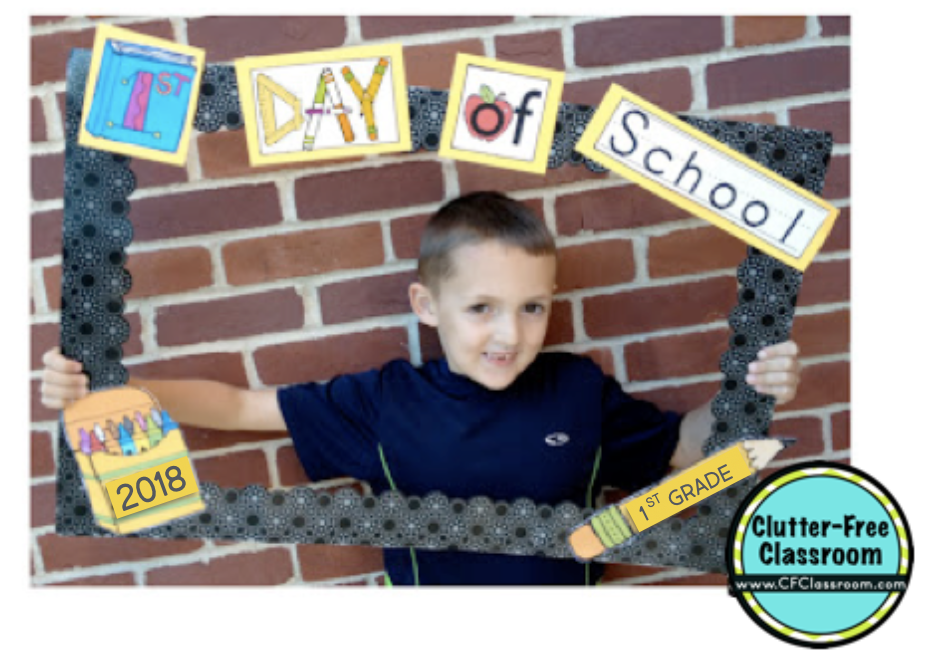
Print two copies of the picture. Use the first one on a bulletin board to accompany student writing samples about their first day of school. Send the second copy home to students’ families with a hand-written note at the end of the first week. This simple gesture means so much to each family! It also helps to start building the important positive connection between home and school.
I know what you are thinking. There is no way you will have time to handwrite 20+ notes during that first week of school. The secret is to start them in the summer. It’s easiest if you have your class list already, but it’s still doable if you don’t. Use the time you’re watching TV this summer to get a jump start on the cards. Write something like the message below.
Dear (fill in the names if you have them), I’ve had a wonderful time getting to know (students’ name) during this first week of school. (Leave enough space to add one sentence during the first week). We had a great first week together. I am looking forward to working with you this year to ensure that (name)’s 3rd-grade year is the best it can be! 🙂 Mrs. (name).”
During the first week of school, add a sentence specific to each child in the middle and attach his or her picture to the front of the card. You can write things like “Jack was so helpful with getting one of our new students acclimated to the school” or “Kylee and I discovered we have a lot in common. We both have Golden Retrievers and love apple pie.” Send them all home at the end of the week. You will be surprised at how little time it actually takes!
8. Get to School Early
Allow plenty of extra time so you are not worried about traffic, coffee spills, last minute students added to your roster or any other unplanned distractions. You want to be calm, cool and collected when the littles arrive.
In closing, we hope you found these teachers first day of school checklist ideas helpful! If you did, then you may also be interested in these posts:

